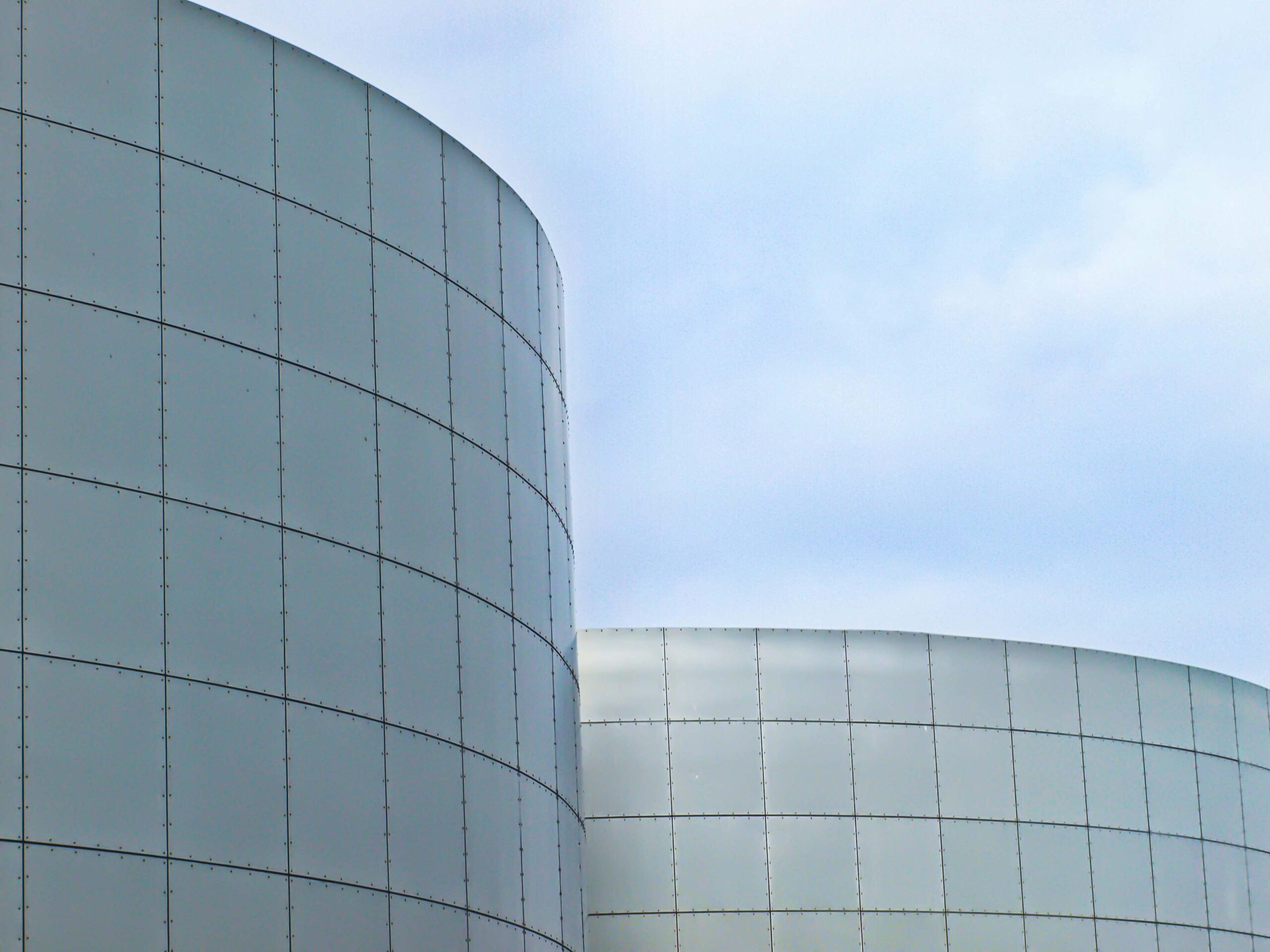Elevate Agriculture with Potassium Silicate Nutrient
Are you aware that nearly one-third of worldwide plant production can be boosted with improved fertilizers like potassium silicate? This figure underscores the nutrient’s capacity to transform crop cultivation. As agriculturalists confront the challenges of environmental shifts and land deterioration, K Silicate proves as a state-of-the-art solution. It not only enhances plant production but also promotes healthy plant growth.
This write-up will examine the merits of K silicate, its applications in farming, and how to maximize your crops’ capability. With advice from experts, you’ll discover why silicate potash is crucial for healthy yields. It lays the foundation for effective agricultural methods, resulting in higher production and superior crop quality.
Key Highlights
- Potassium silicate fertilizer significantly improves plant resistance.
- It boosts photosynthesis efficiency, causing vibrant crops.
- This nutrient fortifies cell walls, offering durability.
- Effective application techniques are essential for maximizing results.
- Knowing application rates leads to optimal nutrient delivery.
- K Silicate is effective in both soil and hydroponic systems.
- Incorporating K Silicate can improve production in marijuana farming.
What is K Silicate?
Silicate Potash is a water-soluble salt crucial for enhancing agricultural output. It mixes K, necessary for crop vitality, with silicon dioxide. This blend improves crop robustness and production. The distinct formulation of silicate potash strengthens plant cells and boosts resilience against climatic challenges.
This fertilizer’s adaptability allows it to be ideal for both soil-based cultivation and soilless agriculture. Its dissolvable K guarantees superior nutrient uptake. This ensures plants get the necessary nutrients for optimal production.
Farmers and horticulturists commonly use silicate potash for its power to enhance plant durability. By incorporating this fertilizer, they enhance the vitality and strength of their plants. This leads to stronger growth and likely better harvests.
Benefits of Silicate Potash for Agricultural Yield
Potassium silicate is renowned for its extensive positive effects in crop cultivation. This additive is central for improving agricultural output and vitality. Its distinct features deliver distinct gains that are essential for plant development.
Boosts Crop Resistance
Potassium silicate greatly boosts agricultural durability. Silica in this fertilizer strengthens plants against dry conditions and pathogens. It prepares agriculture with a biological shield, empowering them to survive environmental stress more efficiently.
Improves Light Absorption
The inclusion of potassium and silicon enhances photosynthesis. It promotes chlorophyll production, helping crops to absorb solar energy more effectively. This results in healthier leaves and higher production, immediately supporting plant growth and vitality.
Reinforces Plant Cells
Silicate Potash strengthens cellular structures in crops. These fortified tissues help plants to withstand climatic challenges and pathogens more successfully. This not only boosts agricultural strength but also encourages their vitality throughout different development phases.
Uses of K Silicate in Farming
K Silicate is essential in crop production, serving as a cornerstone in boosting crop production. It acts as a plant booster, supporting crop development and boosting nutrient absorption. Farmers commonly apply potassium silicate for different plants, including:
- Large-scale crops like maize and soy
- Climbing plants such as vines and cucumbers
- Aesthetic crops for aesthetic appeal
- Hydroponic systems for soil-free agriculture
Incorporating K Silicate to cultivation methods improves plant health. It boosts agricultural protection, causing higher yields and improved harvest outcomes. Moreover, it helps with moisture preservation and assisting plants in stress management, enhancing their growth throughout the year.
| Crop Type | Benefits of Silicate Potash | How to Apply |
|---|---|---|
| Field Crops | Improves dryness resilience | Soil application or foliar spray |
| Trellis Crops | Promotes fruit quality | Drip irrigation |
| Ornamentals | Boosts coloration and development | Leaf spray |
| Hydroponics | Enhances nutrient consistency | Mixed in nutrient solution |
The varied uses of K Silicate in crop cultivation underscore its essential function. It provides vitality in vegetation and increases crop yields.
Using K Silicate
Correct use of silicate potash is vital for enhancing crop productivity. Understanding the correct application methods can dramatically enhance agricultural success. Below, explore the various application methods and effective strategies for adding this essential fertilizer into your crop management.
Application Methods for Optimal Results
There are several ways to incorporate silicate potash, providing options to suit different crop needs. Here are a few effective methods:
-
Foliar Spraying: This approach includes mixing silicate potash with water and distributing it on leaf surfaces. It ensures quick absorption by the crop.
-
Soil Application: Mixing silicate potash to the soil near plant roots renders it easily absorbed for plant use.
-
Application in Water-Based Farming: For soilless farmers, integrate potassium silicate in fertilizer mixes to provide essential silicate to crops in a managed environment.
The solubility of K Silicate supports effective uptake by vegetation through these methods, guaranteeing your receive the nutrients they depend on.
Best Practices for Integration
To fully utilize potassium silicate fertilizer, adhere to these recommended guidelines:
- Mix potassium silicate with water as recommended by the manufacturer before use.
- Do not combine K Silicate with strong nutrients in the same container. This can lead to unwanted interactions that reduce its effectiveness.
- Consistently monitor surrounding elements and plant health to gauge the effectiveness of your application.
By following these application methods and recommended strategies, you can dramatically improve the effectiveness of silicate potash. This will assist produce more robust vegetation.
Dosage Guidelines for K Silicate
Grasping the right usage levels for potassium silicate is crucial to guaranteeing optimal plant vitality. Using the proper amount is essential to stop under-application or over-application. Both situations may influence plant performance and harvest detrimentally.
Understanding Application Guidelines
Usage levels for silicate potash are influenced by different elements, including the crop variety, its maturation level, and the soil’s condition. It’s important to adhere to usage recommendations from producers. These instructions are created for specific crops and scenarios. While a common dosage is often provided, conducting soil tests may provide more specific instructions.
Considerations for Usage Amounts
Several factors are vital in determining the right silicate potash usage amounts:
-
Earth Makeup: Ground structure and composition affect the availability of nutrients.
-
Current Nutrient Concentration: Checking current potassium and silica levels is vital before incorporating.
-
Agricultural Demands: Different vegetation has specific nutrient demands that determine the right dosage.
| Crop Type | Development Phase | Recommended Application Rate (lbs/acre) |
|---|---|---|
| Vegetables | Early Growth | 10-20 |
| Fruit Trees | Halfway Development | A range of 30-40 |
| Cereal Crops | Pre-Harvest | A range of 15-25 |
| Blooming Plants | Flowering Stage | Between 5-10 |
Popular Silicate Potash Options
Identifying quality potassium silicate products is crucial for optimal farming. A variety of brands offer distinct features and cost-effective options, serving different crop requirements.
Popular Brands to Consider
Well-known brands among the leading K Silicate products are:
- AgSil Products
- Advanced Growth Solutions
- VanBaerle Products
These producers are known for their products engineered to improve farming results.
Product Features and Pricing
Knowing the benefits and costs of potassium silicate products enables better product selection. For example:
| Producer | Specific Option | Concentration | Silicon Dioxide Level | Pricing |
|---|---|---|---|---|
| AgSil Products | AgSil 16H | 0-0-32 | 52.8% | \$45.34 (4 lb package) |
| Advanced Nutrients | Rhino Skin | 1% K | Silica-Enhanced | \$36.99 (1 L) |
| VanBaerle Nutrients | Silicate 10 | 0-0-10 | Silica Level Unspecified | \$29.99 for 5 lbs |
This overview highlights the diversity in attributes and pricing across top companies. Thoughtful evaluation of these aspects ensures the most effective utilization of silicate potash in crop production.
Potassium Silicate for Plant Health
Silicate Potash is vital for enhancing crop vitality, enhancing robustness and resilience. It reinforces plant cells, leading to better disease resistance and faster growth. This substance SiO2 benefits vegetation by toughening plant structures, important in surviving extreme conditions and disease risks.
Furthermore, silicate potash enhances water retention and plant nutrition in crops. Robust plants take in nutrients more effectively and withstand external pressures better. This adaptability aids healthier ecosystems, supporting sustainable farming.
Understanding silicate potash’s value encourages farmers and plant enthusiasts to integrate it in their farming practices. By doing so, they cultivate more resilient crops that can thrive under challenging environments.
| Factor | Impact of Potassium Silicate |
|---|---|
| Cell Wall Integrity | Fortifies plant tissues, enhancing crop durability |
| Pest Protection | Enhanced ability to resist pathogens and threats |
| Crop Maturation | Accelerates development and plant progression |
| Environmental Durability | Enhances tolerance to severe conditions |
| Plant Nutrition | Facilitates better absorption of vital elements |
| Soil Hydration | Enhances water conservation for stronger plants |
Silicate Potash for Water-Based Farming
In the realm of hydroponics, controlling nutrition is essential for best possible agricultural success. K Silicate is a crucial additive that improves the success of soilless cultivation. It’s highly advantageous during important maturation periods, leading to healthier vegetation and better production.
Applying K Silicate in Water-Based Cultivation
Introducing potassium silicate fertilizer into soilless setups at crucial intervals boosts its positive effects. The flowering period is vital, as crops then require more vital elements. Using potassium silicate at this stage results in several advantages:
-
Stronger root systems: A robust root system aids in improved plant nutrition.
-
Enhanced nutrient interaction: silicate potash enhances how plants absorb compounds in soilless setups.
-
Improved stress tolerance: Vegetation become better able to environmental fluctuations.
-
Boosted growth rates: Crops grow faster and stronger with the right amount of potassium silicate.
Sticking to these recommendations guarantees successful integration of silicate potash in your water-based farm. The point and amount of this nutrient greatly influence its efficacy.
| Development Phase | Recommended Dosage | Expected Benefits |
|---|---|---|
| Initial Development | A range of 0.5-1 ml/L | Healthy root development |
| Mid-Growth | Between 1-2 ml/L | Improved nutrition uptake |
| Flowering Stage | Between 2-3 ml/L | Increased harvest quality and plant durability |
Silicate Potash for Cannabis Growth
The use of K Silicate has changed marijuana farming. This fertilizer offers specific positive effects tailored to marijuana crops. It improves plant health, improves crop resilience, and brings about increased harvests.
Improving Production with Potassium Silicate
Silicate Potash supports boosting production by encouraging a robust plant architecture. Elevated silica levels lead to more resilient structures, designed for holding up thick growth. Moreover, it boosts resin output, vital to the potency and value of the flowers. This results in higher harvests and improved marijuana cultivation positive outcomes desired by growers.
-
Robust plant structure: More resilient branches hold up bigger buds.
-
Increased trichome production: Improved flower strength with stronger effects.
-
Improved stress resistance: Ability to endure external pressures.
-
Improved plant vitality: More resilient vegetation result in improved yields.
Using K Silicate delivers a significant benefit for marijuana farmers seeking to enhance their farming practices.
Where to Get K Silicate
Cultivators seeking quality potassium silicate fertilizers have multiple vendors to select. Nearby agriculture hubs are a regular supplier, making these fertilizers accessible to agriculturalists locally. For those preferring online shopping, numerous retailers offer K Silicate, particularly targeting home gardeners.
Well-known brands like Custom Hydro Nutrients, and AN are prominent. They provide a range of products suited to both hobbyists and big agricultural projects. Their commitment to excellence ensures effective crop management.
When choosing silicate potash, consider both the price and the item’s characteristics. Below is a overview of different vendors:
| Company | Product Type | Price per Unit | Intended Audience |
|---|---|---|---|
| Custom Hydro | Water-Soluble Silicate Potash | \$20 per liter | Small and Large Farmers |
| Advanced Nutrients | Powdered Silicate Potash | \$25/kg | Hobbyists |
| Nearby Agriculture Hub | Solid K Silicate | \$15 per 2 kg | Commercial Farmers |
Being aware of the sources for K Silicate helps growers in choosing the right options for their fertilizer needs. This brings about enhanced farming success.
Benefits of Using Potassium Silicate for Blossoms and Fruits
Potassium silicate fertilizer is a game-changer for flowering plants and fruiting vegetation. It significantly enhances bloom size, which not only improves aesthetics but also enhances reproductive success. This leads to a stronger plant growth cycle.
For fruiting crops, K Silicate is a strong performer. It boosts produce size and value, making the fruits more valuable in the market. The product offers more than just growth; it also enhances taste and feel, enhancing the overall market value.
Additionally, silicate potash improves photosynthesis efficiency, causing higher crop yields. Silicic acid, a vital element, increases durability. This enables flowers and fruits to more effectively resist climatic challenges, bringing about prolonged fruiting seasons and more abundant harvests.
Incorporating potassium silicate into your nutrient plan will greatly enhance flowering and yield. It develops a healthier plot or field, making it a best option for those seeking maximum production.
Difficulties and Factors in K Silicate Use
Potassium silicate is a strong tool for boosting crop yields. However, its successful application hinges on managing specific issues. Getting the proper amount is vital. Over-application can lead to nutrient imbalances, hindering agricultural success.
Confirming it’s safe to mix with other products is also vital. Before combining different fertilizers, confirming their safety in combination is necessary. Poor pairings might reduce the product’s success. Understanding these dynamics is vital to refining application methods.
Boosting grower awareness about these factors can dramatically enhance K Silicate application. By making informed decisions, users can grow better vegetation and boost agricultural success.
| Challenge | Factor | Guidelines for Proper Utilization |
|---|---|---|
| Using Too Much | Nutrient Imbalance | Follow guidelines for application rates; test nutrient levels. |
| Combination Concerns | Unwanted Effects | Research product compatibility before mixing; seek professional advice. |
| Lack of Knowledge | Suboptimal Results | Participate in learning programs; learn from best practices. |
Final Thoughts
The importance of K Silicate in crop production is immense. It provides substantial benefits for plant growth. This supplement boosts crop durability and well-being, leading to thriving plants across varied environments.
Additionally, potassium silicate assists in optimal farming practices. It supplies important compounds that shield vegetation from dry conditions and disease. Proper use of this nutrient enables growers to enhance harvests, resulting in abundant harvests.
As we consider green agriculture, silicate potash appears to be a vital tool for producing healthy vegetation. By using this fertilizer, agriculturalists can cultivate stronger plants. This strategy aids both green farming and profitable agriculture in crop production.



